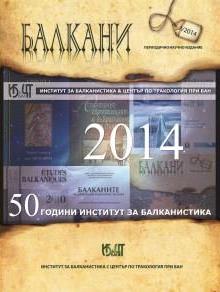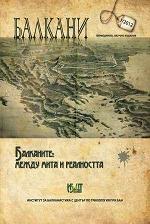Константинопол и неговите страхове
Author(s): Liliana Simeonova / Language(s): Bulgarian
/ Issue: 1/2012
As the Italian scholar and publicist, Guglielmo Ferrero (1871–1942), wrote, every civilization was the result of mankind’s continuous struggle against fear, as fear had been the constant companion of man, since the dawn of human civilization. On the other hand, the French historian J. Delumeau points out that the role, which fear seems to have played in the history of humans, has never been discussed in detail by either written history or oral tradition, as historians of all ages seem to have given preference to the description of heroic acts rather than people’s natural reactions to fear. “The very word ‘fear’ – the French philosopher G. Delpierre says – is loaded with such shame that we need to hide it, burying it deep inside ourselves.”
In the Middle Ages, people used to be afraid of a wide array of things, whether real or imaginary: harmful insects, wild beasts, poisonous snakes, diseases, impotency and infertility, draught, floods, spirits and evil forces, the Devil and his demons, black magic, foreign invasions and foreigners (especially blacks), and the Last Judgment. They were also afraid of darkness as Night was believed to be the sister of Death. Driven by this incredible mixture of fears, some of them realistic and others imagined, people went to great lengths in order to find protection against Evil. For one thing, they tried to enlist the help of God and His saints by worshipping relics, icons, and other holy objects. For another, they relied on potions, amulets, talismans, and a variety of rituals through which one could ward-off of Evil. Last but not least, they believed in the predictions made by astrologers and clairvoyants as well as in the ‘hidden messages’ of inscriptions that were carved on the pedestals of ancient statues.
By examining the beliefs in the “magical” qualities of classical statuary in Constantinople, the present article analyzes the rituals of either evoking the protection of city talismans or exorcising evil spirits by the mutilation or destruction of statues, which were perceived as being the image of one enemy or another or to be inhabited some evil spirit. This, in turn, throws light on the various types of fear that were shared by the commonality and the elite in the Byzantine capital.
More...



